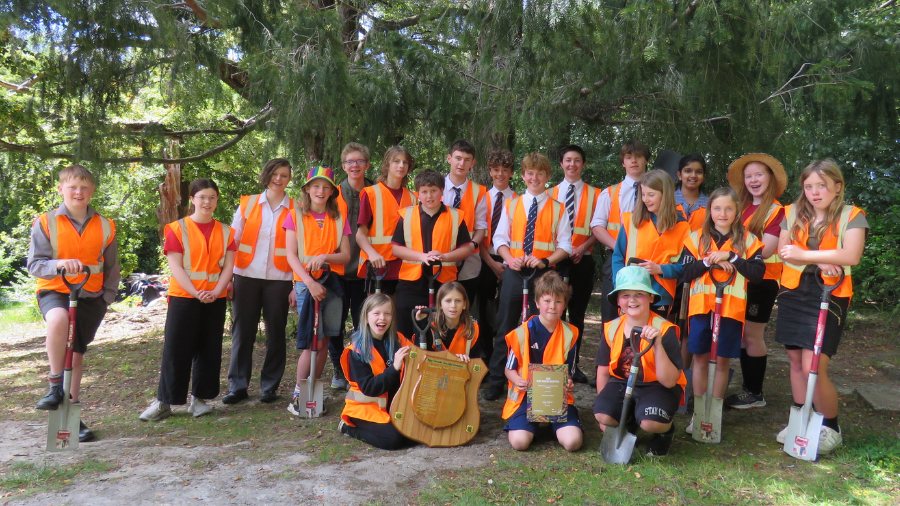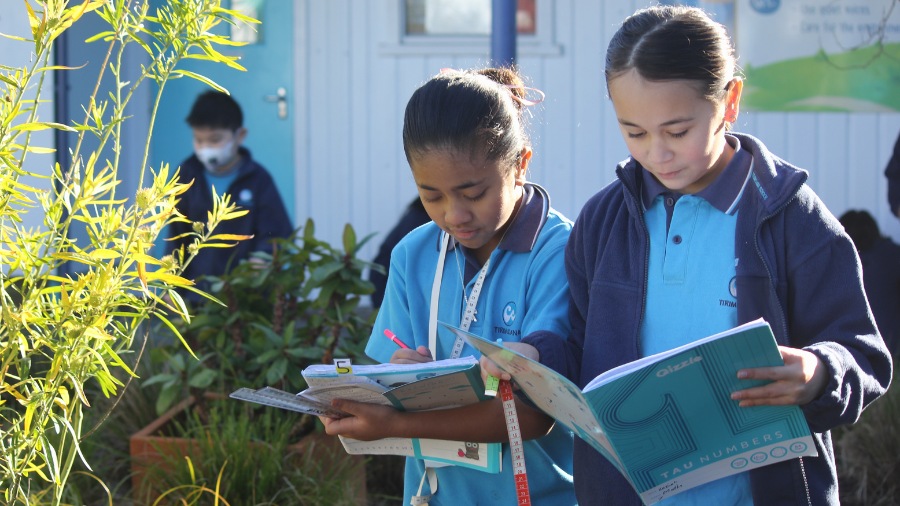Welcoming the arrival of Ngahuru | Autumn
Ngahuru begins when certain tohu appear in the night sky, indicating that important crops such as kūmara are ready to be harvested. In the Maramataka - Māori lunar calendar, Poutū-te-rangi (February - March) is named after the constellation which becomes visible at this time, called Altair in the northern hemisphere.
Te ngahuru tikotikoiere; Ko Poutūterangi te matahi o te tau
Hence the bounteous harvest time; When Poututerangi brings forth the first fruits of the year
- Excerpt from waiata 'He Popo' from Apirana Ngata's Ngā Mōteatea - The Songs Part III
This season also includes the Autumn Equinox, on March 20th this year, when the length of the day and night are equal. It marks the start of shorter days and longer nights as we move into winter. Many cultures all over the world hold harvest celebrations at this time and have created rituals to bring people together and give thanks for the gifts of the season.
For an excellent overview of the importance of seasonal changes for tangata whenua in Aotearoa, as well as Celtic and ancient European cultures, we recommend Juliet Batten's two books: Celebrating the Southern Seasons - Rituals for Aotearoa and Sun, Moon and Stars - Seasonal celebrations for children and families, tamariki and whānau.
Harvesting and Preparing Kai

What are you harvesting from your māra this season? Autumn can be a busy and bountiful time for your school, kura, or community garden, with crops such as kūmara, corn, tomatoes, pumpkins, and beans all ready to pick. If you have an orchard, it's time to make the most of autumn fruit such as apples, pears and feijoas.
Celebrate your harvest by cooking seasonal meals and sharing extra kai with your community.
Para Kore has produced this video about harvesting kūmara - visit their website to find out more about their mahi and how they can support your kura or school.
Garden to Table has produced this free Autumn recipes e-book and can support your primary or intermediate school to integrate growing, harvesting and preparing healthy kai all year round.
The Community Fruit Harvesting movement connects fruit tree owners with groups who have time to pick and share the fruit. The national organisation's website is no longer live, but you can search online to see if there is a local group in your area, or use this inspiring concept to start a similar project in your local community.
Ngahuru is an important season for harvesting kūmara and other crops, but our native plants and cultivated māra also provide kai throughout the year. This Māori Harvesting Seasons online resource from Te Ara - Encyclopedia of NZ allows you to select Whenua, Moana, Rangi and Ngā Awa, to find out which plants and animals can be harvested throughout the seasons.
Seed Collecting

Along with vegetable and flower seeds in your garden, ngahuru is the perfect time to observe and collect seeds from many of our native plants.
Make sure you ask your local mana whenua, council or environmental educator for advice if you're not sure where it's suitable to collect seeds from.
Remember to leave most of the seeds for the birds who need them for food over the cooler months and only take what you're going to use.
Below are some resources and helpful guides:
This Seed Collection Calendar for trees, from the Department of Conservation, is a handy guide for your seed collection journey.
He Kākano community nursery have produced these Seed Collection Guides in both te reo Māori and English, in collaboration with Whitebait Connection and Te Aho Tū Roa.
Seedsavers Taranaki have produced a great video and some simple tips for saving vegetable seeds. If you're in Taranaki you can join the group and find out more about the other resources and support on offer from Sustainable Taranaki.
Keep your seeds in a cool, dry place and start researching the next stage of the process. Ākonga could learn how to propagate native seeds or find out when to sow vegetable seeds, which will vary based on where you are in Aotearoa.
Making Seed Balls is a fun activity and you only need three simple ingredients. Use locally sourced native seeds if you're trying to restore a steep bank, or an area covered in gorse. Wildflower, herb and vegetable seeds can also be used, but make sure you only use these within your own property. Just wait for the seed balls to dry out for a few days and then you can start throwing. Some people even use tennis rackets to hit the balls long distances!
Fungi Season

As the autumn rain arrives you will start to notice fungi appearing under trees or in your lawn. Use this opportunity to explore questions and find out more about these fascinating and important organisms.
Foraging for wild fungi has become really popular recently with books such as Fungi of Aotearoa. Cover some basic safety rules with ākonga before you go on nature walks, such as not eating any fungi and washing hands after touching them.
Family of Forest and Fungi is a wonderful book for children, with activities to encourage connection with nature and te ao Māori, beautiful illustrations, and information about the interconnectedness of fungi and plants within our ecosystems.
Science Learning Hub have lots of information and activities in their article All About Fungi.
For a great introduction to fungi and some fun activities such as a scavenger hunt, check out Kids Greening Taupō's Funky Fungi of Aotearoa online nature classroom.
Kiwi Conservation Club have a Fungal Lunch challenge (the competition end date has passed but there are still lots of great ideas you can use) and a Fungi colouring page.
Autumn Art
Get out in your local environment and collect a range of natural items that can be used to create art. This can be as simple as making patterns or other ephemeral art that will be blown away by the wind. You could set up an autumn nature display in your classroom and ask ākonga to bring items from their garden or local park.
Kiwi Conservation Club have a Leaf creations activity with cute creatures and also encourage tamariki to make leaf rainbows from autumn leaves.
Kids Greening Taupō have a huge range of nature art activity ideas, including leaf rubbings, autumn leaf critters and other ideas to get ākonga started and spark their creativity.
Older students could take photos or draw sketches to create a collage of local autumn plants. Look for tohu (seasonal signs in nature) that appear during ngahuru in your local area, such as the beautiful white flowers on the houhere tree, the black seed pods of harakeke, or the bright red fruit on tōtara.
%20(27).jpg)






